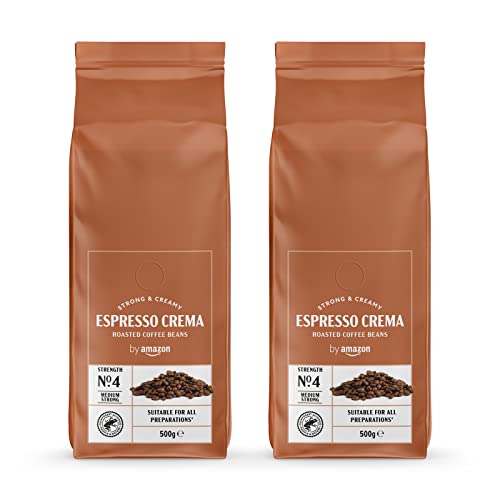Coffee Bean Types: Arabica, Robusta, Liberica, and Excelsa
If you're a coffee lover you're likely aware that different types of beans have distinct flavor profiles. Learn more about four of the most popular varieties: Arabica, Robusta, Liberica and Excelsa.
Excelsa beans are a kind of Liberica is grown exclusively in Southeast Asia. They have a fruitier and more tart flavor profile and are often added to blends of beans to add depth.
Arabica
Arabica coffee beans make up 75% of all global production. Arabica beans are more mild and sweeter than Robusta, and come in different flavors. The aroma and taste of a coffee may vary in a wide range depending on the cultivation conditions and the processing methods used to produce it.
The word 'coffee' actually derives from the Arabic word for berry, and coffee beans are actually fruit seeds that grow in bright red berries. It is believed that the ancient Ethiopian shepherds noticed that their goats were invigorated by eating berries. The cultivation of coffee quickly spread all over the world.
Coffee beans can flourish at high altitudes and thrive in cold temperatures and plenty of rain. This is one of the main reasons that Arabica is considered to be the best-tasting type of coffee.
Many specialty coffee shops and roasters are focused on ethically sourced arabica beans, and focusing on fair wages for farmers and sustainable farming practices. These companies often blend arabica beans to make distinctive coffees that can be used in various brewing methods. Blending is a way to control the flavour, aroma as well as body and acidity of the coffee. It is often preferred in order to achieve a consistent and balanced taste that appeals to a larger market.

Robusta
Robusta beans are the second most popular type of coffee bean around the world. They contain more caffeine per bean than Arabica and are more resistant to disease and pests. They also contain higher levels of chlorogenic acids, which are naturally-occurring antioxidants. These acids can cause oxidation in the coffee's brewing process and cause undesirable flavors.
The plant itself is more robust than arabica, able to thrive in less favorable climate conditions and at lower elevations. It is tolerant of warmer temperatures and thrives in direct sunlight. It produces more coffee per plant and grows more quickly than arabica. This makes it a more economically viable crop to cultivate.
While it may seem counterintuitive, Robusta and arabica beans are often blended together to create coffee blends. If you see names such as Uganda or Kenya on the bag of coffee, it's possible that there's also some robusta.
Most roasters use a mixture of arabica and coffee beans to cut costs and maintain quality. To preserve the integrity of flavor you should select a high quality bean from a reliable source. This can be done by purchasing the beans directly from the farmer.
Liberica
Liberica beans have a shape like a football, which is why they are different from other coffee beans. They have a scent that is fruity, floral and smoky. speciality coffee beans are paired with other types of coffee beans to give them a richer and more robust taste.
Liberica coffee beans are found in West Africa, Malaysia (Borneo) and Southeast Asia. They can be grown at low altitudes and withstand hot, humid climates. They are also more resistant to disease than Arabica or Robusta.
These qualities make them ideal to grow at home. The seeds can be found online from a number of sources, but it's best to buy from local producers to guarantee the quality of the beans. The ideal conditions for the cultivation of Liberica coffee plants are fertile deep volcanic soils, with a moderately acidic pH and adequate annual rainfall.
Excelsa is another type of coffee bean. It was initially classified as a distinct species, but has since been classified as a Liberica variant. These coffee beans are elongated ovals that grow on large 20 to 30-foot coffee plants at medium altitudes. They have a unique taste that is both fruity and tart and has made them a popular selection in blends for house. They have a milder aroma and caffeine content that is lower than Arabica or Robusta however they have a distinctive depth of flavor.
Excelsa
Excelsa coffee beans aren't as popular as Arabica and Robusta, yet they're the fourth most popular. They were actually regarded as to be a different species of coffee until 2006, when they were reclassified to be a synonym for Coffea Liberica var. dewevrei. They are produced in Southeast Asia today and account for 7% the world's production of coffee. These beans have a distinctive teardrop shape and have an intriguing dark flavor. They are frequently used to give blends extra body and a rich, tart taste of ripe fruits.
Arabica beans are the most popular, and are known for having a sweeter taste. They thrive in warm, tropical climates and high altitudes. They have a slight acidity. When roasted and brewed properly they may have notes of chocolate, nuts, or even fruit.
Robusta is the second most popular coffee worldwide, and makes up around 40% of the coffee consumed in the world. Robusta beans are rounder and smaller, yet they contain twice as much caffeine than Arabica. They are also bitterer than the other two varieties and have an earthy, woody flavor.
After you've learned about the four most commonly used types of brew, it's time to select your favorite brew. If you're looking for a silky soft, delicate flavor, go for an arabica bean or a blend of robusta and arabica beans.
